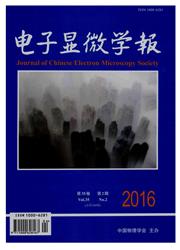

 中文摘要:
中文摘要:
为研究蛋白质晶体的生长机理,采用气相扩散法制备溶菌酶晶体,使用原子力显微成像技术观测了溶菌酶晶体(101)生长面的形貌。发现溶菌酶晶体(101)面生长呈现螺旋位错的特征,其台阶平均高度为2.9nm,相当于单分子层的厚度。而以前在高过饱和度条件下得到的溶菌酶晶体的AFM图像显示为二维成核生长机理,其台阶高度为双分子层的厚度5.6nm。这说明气相扩散法制备蛋白质晶体时,由于溶液的过饱和度较小,溶菌酶在溶液中可能不形成多聚物而是以单个分子的形式结合到晶体上,即(101)面的主要生长单元并非具有4、螺旋结构的四聚体,而是溶菌酶单分子。这一结果为蛋白质晶体生长机理的探索提供了实验依据,是对溶菌酶晶体生长单元认识的补充。
 英文摘要:
英文摘要:
In order to study the growth mechanism of protein crystals, the surface morphology of ( 101 ) face of lysozyme crystals obtained by gas diffusion method was observed by AFM imaging. The growth of (101) face of lysozyme crystals showed a spiral dislocation characteristic, and the average height of the step was about 2.9 nm, which corresponded to unimolecufar height. While in the past experiments, the AFM images of lysozyme crystals grown with high supersaturation showed two-dimensional nucleation mechanism, and the height of the step was about 5.6 nm, which corresponded to bimolecular height. The result in this article indicated, when the protein crystal was obtained by gas diffusion method under low supersaturation, the lysozyme in liquid might not form multiple dimers but the single molecule that attached to the crystal face, which was to say the main growth unit of ( 101 ) face was not tetramer with 43 helix structure but single molecule. This result could be an experimental basis for the studies of growth mechanism of protein crystals and it was the supplement for understanding the growth units of lysozyme crystals.
 同期刊论文项目
同期刊论文项目
 同项目期刊论文
同项目期刊论文
 期刊信息
期刊信息
